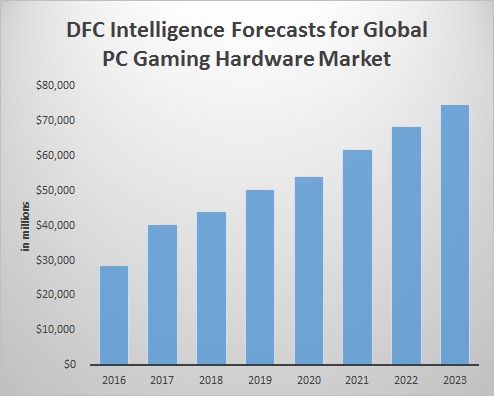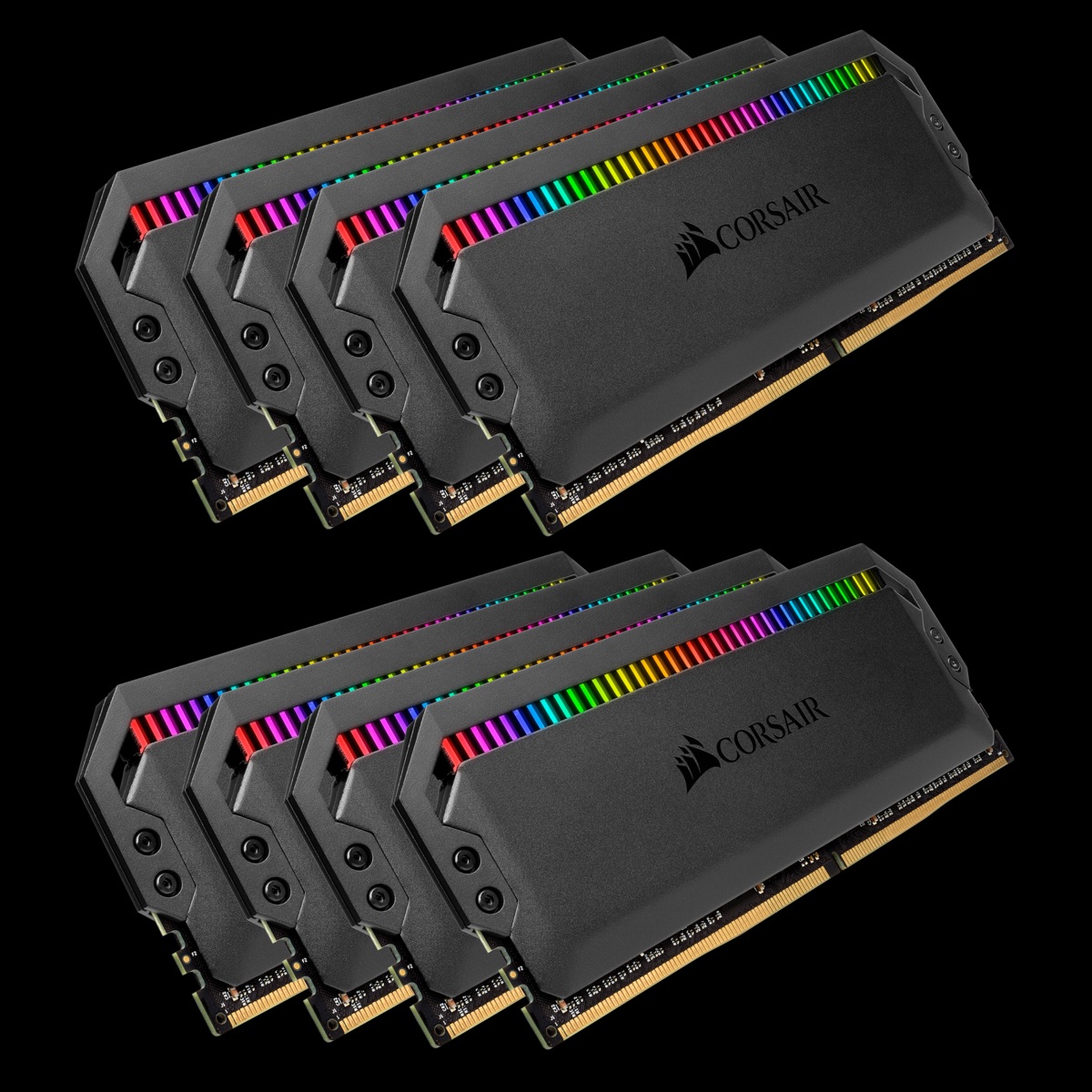The latest DFC Intelligence forecasts estimate that by 2023 consumer spending on PC game hardware spending will reach $70 billion. This is a big number and it is, of course, attracting all kinds of participants. There will be many companies losing money trying to chase this consumer spending.
Just like with the software market, there is no shortage of companies trying to cash in on consumer demand. Ironically, market growth often means lots of people losing money. This has definitely occurred on a regular basis in the video game industry.
In the first part of the 21st century, there was a rush of companies looking to provide accessories for the growing number of consumers buying video game console systems. In the U.S. alone, console game accessories became a billion dollar market in 2000. However, there were over 50 companies competing for market share.
Many companies ended up going bankrupt, including long-term market leader Interact Accessories. The video game console accessory market has continued to grow, but it is now led by the hardware manufacturers (Microsoft, Nintendo, and Sony) and some third-party companies like Turtle Beach which focus on high-quality products for discerning gamers. There are still plenty of cheap competitors, but today quality seems to have beaten quantity.
The PC game hardware space is already littered with competition. Almost all PC components have products custom branded for gamers. Of course, on the high-end are entire PC systems designed just for gamers.
Overall PC hardware shipments have been flat to down for several years. However, game consumers are a growing segment of the market. So, of course, it makes sense to target those consumers.
The top 4 PC manufacturers are HP, Lenovo, Dell, and Apple. Of these companies only Dell, with its Alienware brand, does a good job specifically targeting gamers. While the game hardware market is large, it is still small considering the size of big players in the space.
The question will be who will survive all this market growth? Large manufacturers like HP and Lenovo are slowly catching on to the gamer market. HP has created the Omen brand of desktop and laptops specifically targeted towards gamers. This includes products like a $1,300 curved 35-inch monitor and a $180 gaming keyboard.
Already gamers are being overwhelmed with choices. In most cases, hardware marketing is done via eSports events. Our consumer surveys consistently show that over 60% of PC gamers watch eSports, so this makes sense.
However, eSports marketing is low hanging fruit. With every brand slapping their logo on competitions there will be diminishing returns. Furthermore, this is an area where the deep pockets will eventually win.
The good news is that this space is still relatively small and there is room for innovative players. A combination of quality product and solid distribution is likely to be the key to success. Gamers are a sophisticated audience when it comes to buying a product.
There is an entire market of game enthusiasts that custom builds their own PCs. Corsair is a California company that has focused on the build your own PC market. Corsair found gamers were a core customer and they saw tremendous growth servicing that consumer base.
In recent years, gamer PCs have gone mass market. Companies like CyberPowerPC, iBuyPower and Computer Upgrade King (CUK) have focused on getting distribution for gaming and custom-built PCs (often from other manufacturers). The success of these companies has been largely driven with their relationships with distributors like Wal-Mart, Best Buy and Amazon. In many cases, they are selling systems from other manufacturers.
Along with PC game distributor Steam, Corsair and Nvidia are some of the most respected brands among gamers. This is pretty surprising when you consider both companies are best known for making components that help run game systems. Both companies have used their brand strength to launch more direct consumer products.
It will be interesting to see how the competition heats up in the PC game hardware space. The large companies are starting to pay attention, but it remains to be seen if they can have the laser focus required for gamers.
For example, Microsoft has been in and out of PC hardware for years. Their latest effort with the Surface brand is not even targeted towards gamers. With the Xbox brand, Microsoft has learned that gamers can be a tough audience.
The new PC Game Hardware Forecast report is part of a series of reports that look at the PC game market from several perspectives. It is also part of the video game industry segmentation series that sizes the video game market from both a supplier and a consumer demand perspective.
For an initial look at the industry from a supplier perspective, we urge you to check out the segmentation that DFC Intelligence did in conjunction with Venture Beat and Atlas Technology Group. It is available on the Venture Beat website. This segmentation lists the major companies in each industry segment.
From a consumer perspective, the new Global Video Game Consumer Segmentation report is part of a series of reports DFC Intelligence is releasing looking at the global game market. Additional reports are focusing on direct comparisons between hard-core, moderate and casual game consumers.



